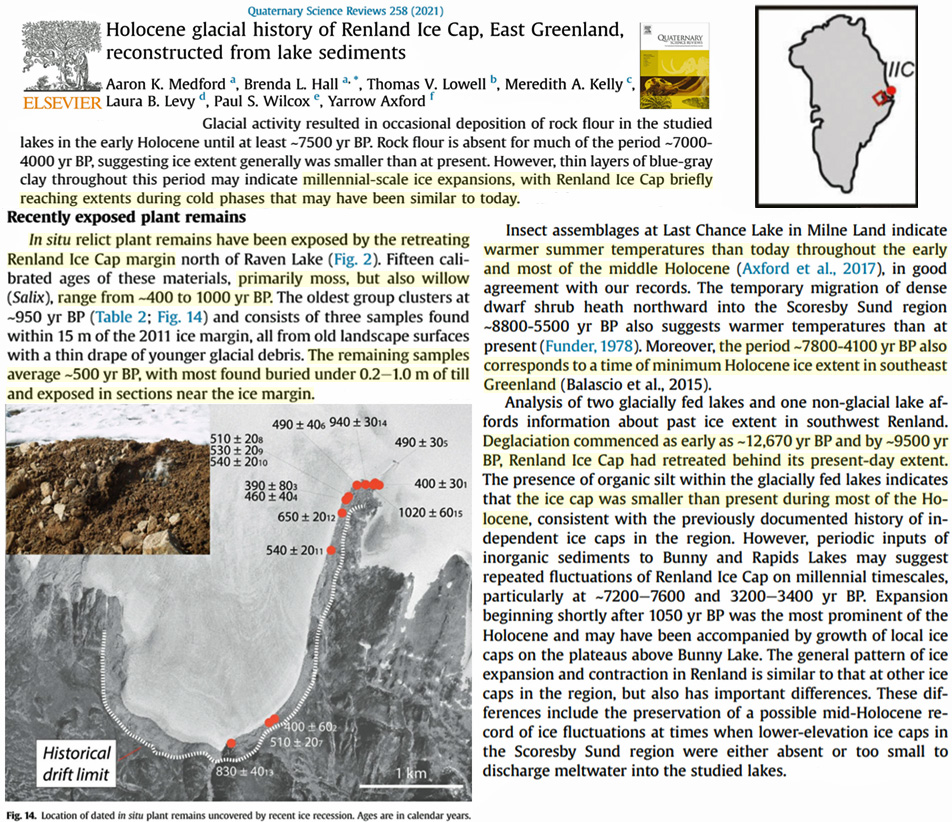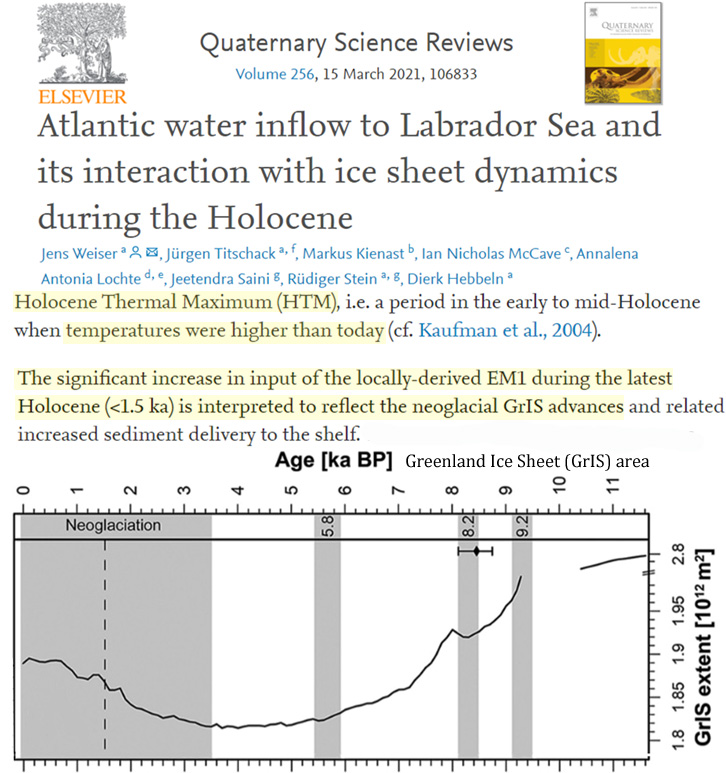
This is pretty much conforming to the having the Little Ice Age glacier growth retreating back to where it started.
This is pretty reasonable in light of how much gross sea ice we have lost without really noticing.
The final collapse of the excess sea Ice back to Pre Little Ice Age levels should establish a much better Northern biome.
Retreating East Greenland Glaciers Uncover Plantis Dating To The 16th – 17th Centuries
By Kenneth Richard on 19. August 2021
Share this...
Exposed moss and willow shrubs buried beneath today’s receding East Greenland glaciers can be dated to 400 to 500 years ago, suggesting this period (the early Little Ice Age) was as-warm or warmer than today.
It is widely accepted that Greenland’s surface temperatures were several degrees warmer (McFarlin et al., 2018, Axford et al., 2021) and ice volume and extent much smaller (Nielsen et al., 2018, Weiser et al., 2021), throughout nearly all of the last 8,000 to 10,000 years.

Image Source: Weiser et al., 2021
What may not yet be widely accepted is the conclusion that the modern temperatures and ice extent still fall within the range of a Holocene “cold stage” rather than a warm stage.
A new study documents a much warmer-than-today Early and Middle Holocene in East Greenland, a time when ice caps were “absent” or far less extensive than they are presently. Plant remains buried under retreating glaciers in East Greenland affirm these locations were not covered in glaciers as recently as 400 to 500 years ago.
But the authors also report there were occasionally brief “cold stages” during the Holocene when Greenland’s glacier extent advanced to today’s levels.
“…Renland Ice Cap briefly reach[ed] extents during cold phases that may have been similar to today.”
This suggests that the modern temperatures and ice volumes fall within the range of a “cold stage” too.
Came across this recently, describes an event involving the Beaufort Gyre that could result in sudden cooling and is linked by the Studies to the LIA and the Ice Age Coming of the 50/60s. Link below to Electroverse where there is a link to the e360.yale.edu report.
——————-
As reported by e360.yale.edu: Today, the Beaufort Gyre now holds as much freshwater as all of the Great Lakes combined, and its continuing clockwise swirl is preventing this enormous volume of ice and cold-freshwater from flushing into the North Atlantic Ocean. Scientists say the gyre will inevitably weaken and reverse direction, and when it does it could expel a massive amount of icy fresh water into the North Atlantic.
Polar oceanographer Andrey Proshutinsky of the Woods Hole Oceanographic Institution has labeled this anticipated surge of water a “ticking climate bomb,” noting that even a partial flush of that growing reservoir –a mere 5 percent– could temporarily cool the climate of Iceland and northern Europe. A larger outflow would actually threaten to shutdown the Gulf Stream, an event that would see ice age conditions sweep Northern and Western Europe almost overnight.
–The Arctic’s “Ticking Climate Bomb”: Little Ice Age Imminent – Electroverse
–https://electroverse.net/the-arctics-ticking-climate-bomb-little-ice-age-imminent/